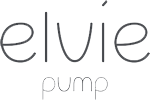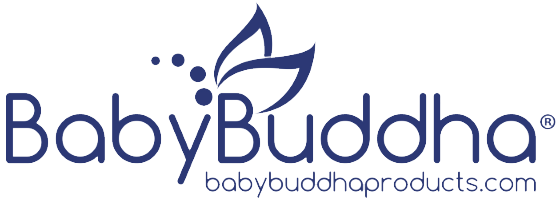Essential Tips for Breast Feeding
The First Few Steps in Breastfeeding
If breastfeeding is a whole new experience for you, worry not because moms from all over the world are sharing their experiences so new moms can learn from them. We made a compilation about how to begin breastfeeding and how to make the experience easier and more worry-free.
If you are in need of reliable and affordable breast pumps and accessories, Insurance Covered Breast Pumps can help create a positive experience for you and your baby.
Below are some tips on how to begin breastfeeding, with pointers on how to properly hold your baby.
How do I begin breastfeeding?
Wash your hands before each feeding. With your free hand, put your thumb on top of your breast and your other fingers below.
Touch your baby’s lips with your nipple until your baby opens his or her mouth very wide. Put your nipple all the way in your baby’s mouth and pull your baby’s body close to you. This lets your baby’s jaw squeeze the milk ducts under your areola.
When your baby is “latched on” the right way, both lips should pout out (not be pulled in over his or her gums) and cover nearly all of the areola. Instead of smacking noises, your baby will make low-pitched swallowing noises. Your baby’s jaw may move back and forth. If you feel pain while your baby is nursing, he or she is probably not latched on correctly.
Your baby’s nose may touch your breast during nursing. Babies’ noses are designed to allow air to get in and out in just such a case. But if you’re concerned that your baby can’t breathe easily, you can gently press down on your breast near your baby’s nose to give him or her more room to breathe.
How should I hold my baby while breastfeeding?
You can hold your baby in a number of ways. Your baby shouldn’t have to turn his or her head or strain his or her neck to nurse.
In the cradle position, you put your baby’s head in the crook of your arm. Support
your baby’s back and bottom with your arm and hand. Your baby will be lying sideways facing you. Your breast should be right in front of your baby’s face.
The football position consists of tucking your baby under your arm like a football with his or her head resting on your hand. Support your baby’s body with your forearm. This may be a good position if you’re recovering from a cesarean section or if your baby is very small.
You can also lie on your side with your baby facing you. You can use pillows to prop up your head and shoulders. This is also a good position if you’re recovering from a cesarean section or an episiotomy.
What is the let-down reflex?
The let-down reflex makes breastfeeding easier for your baby and means your milk is ready to flow. A few seconds to several minutes after you start breastfeeding, you may feel a tingle in your breast, and milk may start to drip from the breast not being used. These are signs that your milk has “let-down.” Let-down may also occur if a feeding is overdue, if you hear your baby cry or even if you think about your baby.
Let-down can be forceful enough to cause your baby to cough. If this is a problem, you can express some of your milk by hand before a feeding to bring on the let-down reflex before you start breastfeeding.
What can I do if my nipples get sore?
It’s easier to prevent sore nipples than it is to treat them. The main thing that causes sore nipples is when your baby doesn’t latch on properly.
If your baby isn’t latched on the right way, you’ll need to start over. To take your baby off your breast, release the suction by putting your finger in the corner of your baby’s mouth between the gums.
Don’t limit the time you let your baby nurse. Putting a limit on nursing time doesn’t prevent sore nipples, but it may keep the milk ducts from completely emptying. This can lead to swelling and pain. Applying crushed ice compresses before nursing can ease discomfort.
How often should I feed my baby?
Feed your baby as often as he or she wants to be fed. This may be 8 to 12 times a day or more. How often your baby wants to feed may change over time as he or she goes through growth spurts. Growth spurts occur at about 2 weeks and 6 weeks of age and again at about 3 months and 6 months of age.
Let your baby nurse until he or she is satisfied. This may be for about 15 minutes to 20 minutes at each breast. Try to have your baby nurse from both breasts at each feeding. The box below lists the signs to watch for so you’ll know your baby is getting enough milk. If you’re nursing fewer than 8 times a day, be especially aware of these signs.
How can I increase my milk supply?
If you think your baby needs more milk, increase the number of feedings a day. It’s also important for you to get plenty of rest and eat right. Give your body time to catch up to your baby’s demands.
Don’t start giving your baby formula or cereal. If you give formula or cereal to your baby, he or she may not want as much breast milk. This will decrease your milk supply. Also, your baby doesn’t need any solid foods until he or she is 4 months to 6 months of age.
What should I eat?
The best diet for a breastfeeding woman is well balanced and has plenty of calcium. This means you should eat fruits, vegetables, whole-grain cereals and breads, meats, beans and milk and dairy foods like cheese. You’ll need to get enough calories–about 500 more per day than usual–and you’ll need to drink more fluids.
What should I avoid eating?
If you think a food you’re eating bothers your baby, quit eating it. Caffeine and alcohol can get into your milk, so limit how much you drink. Medicines–even those you can buy without a prescription–can also get into your milk. Don’t take anything without talking to your doctor first. Also, if you smoke, nursing is another good reason to try to quit. Smoking can cause you to make less milk and the chemicals in cigarettes and smoke can get into your milk.
Latching is an important aspect in breastfeeding because this is the moment where the baby begins to draw out milk from your nipple and areola and gets the nourishment he needs. Below are some steps on how to get a good latch:
First seen on (http://www.parents.com/baby/breastfeeding/tips/tips-getting-baby-breastfeeding/)
In breastfeeding, the latch is the moment everything comes together: Your baby takes a big mouthful of your nipple and areola (or “latches on”), begins to suck, and draws out your milk. When your baby has established a good latch, your nipple soreness is minimized and your little one gets the nourishment he needs.Here are more steps to get a good latch right from the start.
Step one: Do your homework. Before your baby arrives, take a breastfeeding class — many hospitals and birthing centers offer them — or go to a La Leche League International meeting. At prenatal breastfeeding classes, instructors demonstrate latching with videos or with dolls, so you can get more comfortable with the process. Connecting with other moms and new moms-to-be can be an invaluable source of support should you have questions or problems when your turn arrives.
Step two: Get comfortable. Find a relaxed position that you can stay in for a while. Some experts encourage moms to breastfeed in a reclined position (usually about 45 degrees, though do what feels good for you), especially at the beginning. “It’s usually much more comfortable for the mom,” Pease explains. Also, when you’re lying back, gravity helps support your baby so you don’t have to do all the work. And it’s an easier position for your baby to use her hands, lift and turn her head, and bury her chin into the breast, all helpful things for her to do when she’s latching on. It’s your partner’s job to hold your baby while you’re getting settled, so pay attention to where you might need an extra pillow or two, and make sure your water bottle’s full.
Step three: Start breastfeeding as soon as possible after your baby is born. The earlier you start breastfeeding, the more likely you’ll be to tap into your baby’s innate abilities to latch on, making the process easier for both of you, as well as keeping your milk supply strong. “Right from the very beginning, a baby’s natural reflex is to crawl up to Mommy’s breast on his own and start nursing,” says Agnes Pedicino, IBCLC, and a childbirth educator based in New York City. “When you put your baby’s bare skin on your bare skin, you help those reflexes kick in.” Even if you’ve had to be separated from your baby for a little while after birth, skin-to-skin contact, plus your smell and touch, can bring him right back to nuzzling and rooting around looking for your nipple.
Step four: Set your baby up to nurse properly. Begin by putting your baby tummy down on your bare chest, and tummy in little else than her diaper, with her cheeks and chin touching your breasts. Some moms find it most comfortable to place their babies horizontally across their chests, but do whatever works for you. Placing your hand on your baby’s upper back and neck might help steady her. You can encourage her interest in your nipple and make her open wide by expressing a little colostrum (your first milk): Rub your thumb and finger back and forth across your nipple, gently compressing your areola to make some come out. If your breasts are large or your baby’s mouth is small, you can make it easier for her to latch if you compress your breast gently into a sort of nipple sandwich: Cup your breast in a U-hold so your fingers are parallel to your baby’s lips and gently squeeze, as you would if you were pressing down on a big sandwich you’re about to bite into. You’ll be making your breast into a smaller “bite” for your baby.
Step five: Know the signs of a good latch. Your baby is latching well if you feel a pulling or tugging sensation on your breast and he is getting milk. How to tell if your baby is swallowing? His temple and lower jaw move rhythmically and you hear a breathy aah occasionally, which is your baby exhaling after he swallows. (Keep in mind that before your milk comes in, your baby won’t be swallowing all that often because the volume of colostrum isn’t high.) Ideally, your baby’s lips will be flanged out — like a fish or an open flower — around your nipple and areola, not tucked under, which may make your nipples sore.
Step six: Be on the lookout for signs of trouble. It’s common for new moms to feel a little soreness or tenderness with breastfeeding, especially in the very beginning. “But you shouldn’t feel pinching or biting, and any soreness shouldn’t last the entire feeding,” Pease says. “If it does, it means there’s something going on that we need to explore.” Pay attention to how your nipple looks when your baby detaches. “If it’s compressed, cracked, or bleeding, that’s not normal,” Pedicino says. If you notice any of these things or feel a lot of pain, or if something seems off for your baby, reach out to a lactation consultant, talk to your doctor or pediatrician, or find a support group.
Asking for help on the very first time you try breastfeeding can help facilitate the start of your breastfeeding. The attending doctors and nurses can be there to guide you and help you so that you will not be having a hard time in positioning your baby among other things.Here are some more tips that you might want to read on:
First seen on: (http://www.mayoclinic.org/healthy-lifestyle/infant-and-toddler-health/in-depth/breast-feeding/art-20047138)
You know the benefits of breast-feeding. Breast milk contains the right balance of nutrients for your baby. Breast milk is easier to digest than is commercial formula, and the antibodies in breast milk boost your baby’s immune system. Breast-feeding might even help you lose weight after the baby is born.
Still, breast-feeding can be challenging. Use these breast-feeding tips to get off to a good start.
Ask for help right away
Reading about breast-feeding is one thing. Doing it on your own is something else. The first time you breast-feed your baby — preferably within the first hour after delivery — ask for help.
The maternity nurses or a hospital lactation consultant can offer breast-feeding tips, starting with how to position the baby and make sure he or she is latching on correctly. Your doctor or your baby’s doctor might offer breast-feeding tips, too.
Start by getting comfortable. Support yourself with pillows if needed. Then cradle your baby close to your breast — rather than learning forward to bring your breast to your baby. Support the baby’s head with one hand and support your breast with the other hand. Tickle your baby’s lower lip with your nipple to encourage your baby’s mouth to open wide. He or she will take in part of the darker area around the nipple (areola). Your nipple will be far back in the baby’s mouth, and the baby’s tongue will be cupped under your breast. Look and listen for a rhythmic sucking and swallowing pattern.
If you need to remove the baby from your breast, first release the suction by inserting your finger into the corner of your baby’s mouth.
Let your baby set the pace
For the first few weeks, most newborns breast-feed every two to three hours round-the-clock. Watch for early signs of hunger, such as stirring, restlessness, sucking motions and lip movements.
Let your baby nurse from the first breast thoroughly, until your breast feels soft — typically about 15 to 20 minutes. Keep in mind, however, that there is no set time. Then try burping the baby. After that, offer the second breast. If your baby’s still hungry, he or she will latch on. If not, simply start the next breast-feeding session with the second breast. If your baby consistently nurses on only one breast at a feeding during the first few weeks, pump the other breast to relieve pressure and protect your milk supply.
Hold off on a pacifier
Some babies are happiest when they’re sucking on something. Enter pacifiers — but there’s a caveat. Giving your baby a pacifier too soon might interfere with breast-feeding, since sucking on a breast is different from sucking on a pacifier.
The American Academy of Pediatrics recommends waiting to introduce a pacifier until breast-feeding is well-established, usually three to four weeks after birth. Once you’ve settled into a breast-feeding routine, keep in mind that sucking on a pacifier at naptime or bedtime might reduce the risk of SIDS.
If you have been comfortable with breastfeeding, Insurance Covered Breast Pumps provides you with affordable breast pumps and accessories. Contact them now so they will work with your insurance company so you can receive your breast pump at little to no out of pocket cost.














